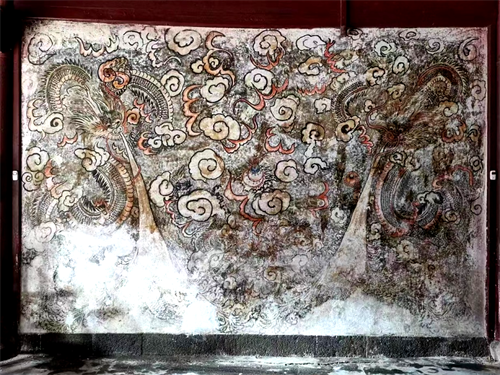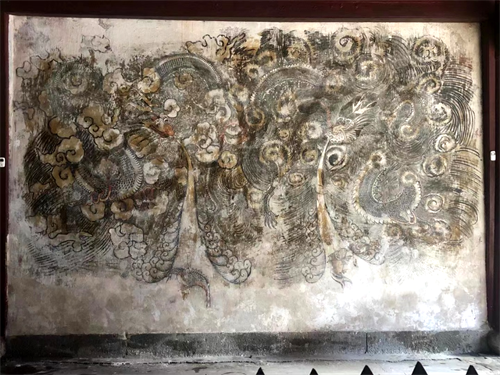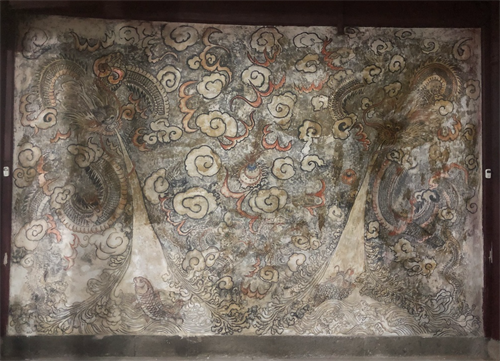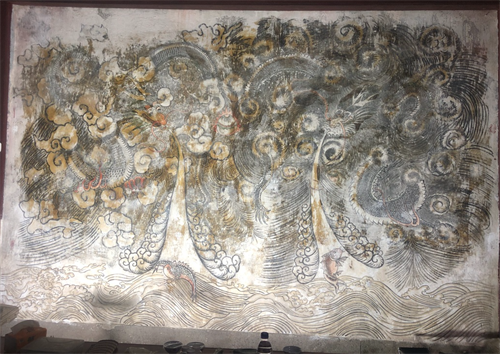SHINING 3D was recently invited to conduct a high-profile heritage restoration and conservation project. The project used EinScan HX Hybrid Handheld 3D Scanner to digitally capture a 200-year ancient mural for digital restoration and conservation.
Table of Contents
Project background
Linglong Palace, one of China’s significant heritage sites, is located in Ningbo, Zhejiang Province. It was constructed more than 200 years ago, during the Qianlong period of the Qing Dynasty. The temple contains a famous mural, about 3 meters high and 4 meters long, with a magnificent layout. In 2013, Typhoon Fitow caused the temple to be flooded, and the lower part of the mural was soaked by water for a long time, resulting in a large part of it falling off and being lost, and the vitality of the mural is gradually withering away, restoration and conservation work is imminent.
What are the challenges of ancient murals restoration and conservation?
Challenges in the mural restoration process
The mural was painted long ago, leaving no image data, resulting in the restoration without a reference to cite. This lack of reference material makes it more challenging to restore the mural to its original state. The restorers may have to rely on their expertise and knowledge of the historical period during which the mural was created to ensure that they do not deviate too much from the original design.
Challenges in data collection
The mural is large, and the surface of the mural has been severely eroded and very fragile due to long time immersion in rainwater, with deformation, buckling, hollow drums, etc. The data collection process needs to avoid secondary damage to the mural due to human contact.
As the subsequent restoration work needs to refer to the precise 3D size and color information of the existing murals for further restoration, the traditional 2D data collection method cannot capture the 3D form of the mural disasters:
1. 2D data acquisition may not accurately capture the size of the mural at one time, leading to inaccuracies in the final digital representation.
2. 2D data acquisition only captures the surface of the mural, whereas 3D data acquisition captures the depth, texture, and shape of the mural.
3. 2D data acquisition captures the mural from a single perspective, while 3D data acquisition allows for viewing from multiple angles.
Due to these limits, with 2D data, it’s difficult to identify areas that might require restoration.
How EinScan HX helps with the digital restoration and conservation of ancient murals?
EinScan HX is a 3D scanner with high accuracy, high color fidelity, and excellent adaptability to various materials.
3D data acquisition before restoration
The EinScan HX is a dual blue light handheld 3D scanner with an accuracy of up to 0.04mm and a color camera, which allows for excellent restoration of damaged murals in 3D (e.g., warping, bulging) and surface texture details.
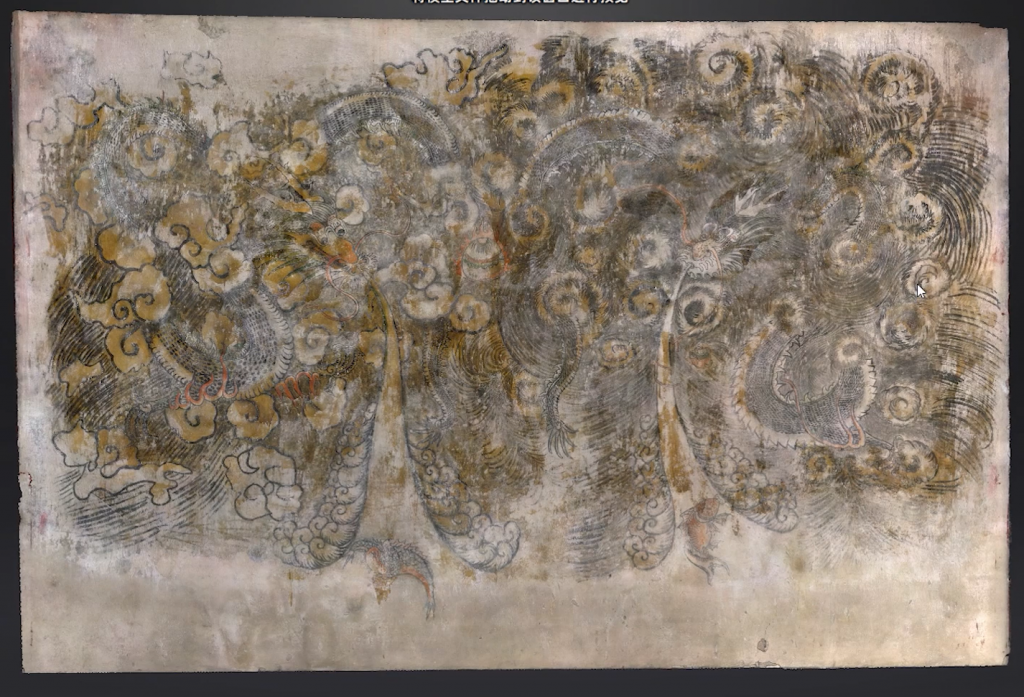
The scanning result of the mural
In addition, EinScan HX has a large FOV and can scan at a very fast speed of 1,200,000 points/s in blue LED mode. It enables the rapid acquisition of high-quality 3D data for the entire mural. Also, there is no need to paste markers, without causing secondary damage to the mural. The collected data can be used to analyze the cause of damage to the mural and to mark disasters, providing data support for restoration.

Scanning with EinScan HX 3D scanner
3D data acquisition after restoration
The restored murals are scanned again in 3D and digitized for archiving, which can be used to evaluate the results of this restoration in comparison with the data before restoration, and as a data source for subsequent research or secondary restoration.
In regards to 3D scanning for mural restoration and conservation tasks, Director Cao (from the Cultural Property Conservation Center of the Ningbo Finance and Economics Institute) commented, “EinScan HX helped us to get the whole information of large murals precisely and quickly, which is very convenient. In the future, 3D scanners may become standard equipment for all murals or even cultural heritage restoration and conservation work.


